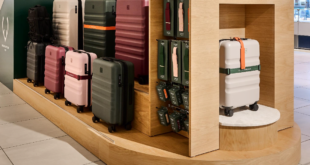As a retired draughtsman, Gordon has been producing computer-assisted plans of the LNER carriages for the North Eastern Locomotive Preservation Group (NELPG), and so was delighted to see the picture of the “Ladies Retiring Room”.
READ MORE: IN PICTURES: 100 YEARS OF LNER
In 1924, as rail travel moved upmarket towards luxury, LNER converted a third class carriage so that one end of it became the retiring room with a dressing table, armchair and full length mirror. A female attendant was on hand for the ladies in the retiring room, and may even have been prepared to sell them toiletries if they wished.
Next to the retiring room was a hairdressing saloon, with a washbasin and “showcase”. This was the first time a British railway had offered a hairdressing service and it must indicate the trains were smooth enough for a hairdresser to wield the scissors without accidentally cutting off a passenger’s ear.
Initially, LNER had self-employed hairdressers working in the saloon, but passengers accused them of charging “extortionate” fees, so the railway’s hotels department provided in-house crimpers.
The retiring room and the saloon were fed water from a special tank added to the roof of the carriage.
Gordon’s plan (above) shows how at the other end of the carriage, LNER added a cocktail bar with barstools as well as seats. At first this sold only cocktails so that it would not harm the takings in the dining car, but as it proved popular, in the 1930s, it was extended to become a buffet.
READ MORE: THE FABULOUS FEAST THAT OPENED THE SOUTH GARE LIGHTHOUSE AT THE END OF THE WORLD
LNER was keen to add a luxury feel to its non-stop services, like Flying Scotsman, and its rail cruises that ran on the Northern Belle. Some first class seats had plugs beside them where passengers to attach headphones so they could listen to the wireless.
Unfortunately, as the train travelled north of York, the reception became too crackly for easy listening. That may be why the ladies in the retiring room have a gramophone player to keep them entertained.
Sadly, the start of the Second World War finished this elegant age of rail travel.
The age had begun on January 1, 1923, when all the disparate private railways across the country were amalgamated into “the big four” companies.
This was known in railway circles as “grouping”.
LNER, which is currently celebrating its centenary, was one of the big four. Two of its component parts were the Great Northern Railway (GNR), which operated on the east coast mainline, and the North Eastern Railway (NER), which had 4,990 miles of lines in Yorkshire, Durham, and Northumberland.
Flying Scotsman passes the Stockton & Darlington Railway at Albert Hill, Darlington
As we said in Memories 628, an A3 Class Pacific locomotive named Flying Scotsman became LNER’s champion – in 1928, it became the first engine to complete a non-stop run from London to Edinburgh, and in 1934, it was the first engine to do 100mph.
“Your statement about Flying Scotsman isn’t quite correct,” says Mike Barnard, in Darlington.
“Before grouping, Sir Nigel Gresley was Chief Mechanical Engineer of the Great Northern Railway (GNR), and the first few Pacific locomotives were built by the GNR in 1922.
“The third one was completed just after grouping so it was the first new Pacific locomotive delivered to LNER. It continued in service for a year with its GNR number 1472, but with no name, until the March of 1924 when it was allocated its LNER number 4472, and given the name Flying Scotsman, after the King’s Cross to Edinburgh train.
Flying Scotsman passing through Darlington in about 1963, photographed by Ian Wright
“The LNER gave this class of locomotives the name A1. Flying Scotsman was rebuilt with an uprated boiler and improved cylinders in 1947 to make it a Class A3. It was eventually sold for preservation in 1963, so it was an A1 for most of its life before 1963.
“The reason it wasn’t classed as A2 was because the Pacifics built at Darlington by the North Eastern Railway, to Raven’s design, also in 1922, became Class A2.
“Gresley didn’t just streamline the A4 Class of locomotives that were introduced in 1935, he designed streamlined coaches too. The complete train used for the Silver Jubilee service between Kings Cross and Edinburgh was painted silver, so must have looked very futuristic. Some of the design features are the same as those used on high speed trains running today, like Eurostar and TGVs in France.”
READ MORE: HOW DID THE MONKS OF MONKEND MEET THEIR END?

On March 9, the Royal Mail celebrated the 100th anniversary of Flying Scotsman by issuing a set of 12 stamps, one of which showed the engine’s impressively large wheels photographed in Shildon – is the first time Shildon has featured on a stamp? The stamps were notable as the last to feature the head of Queen Elizabeth II






